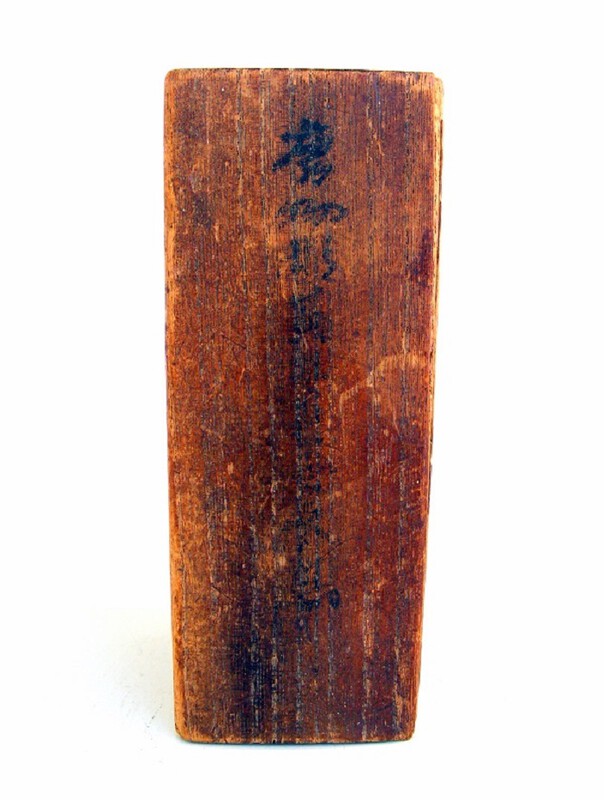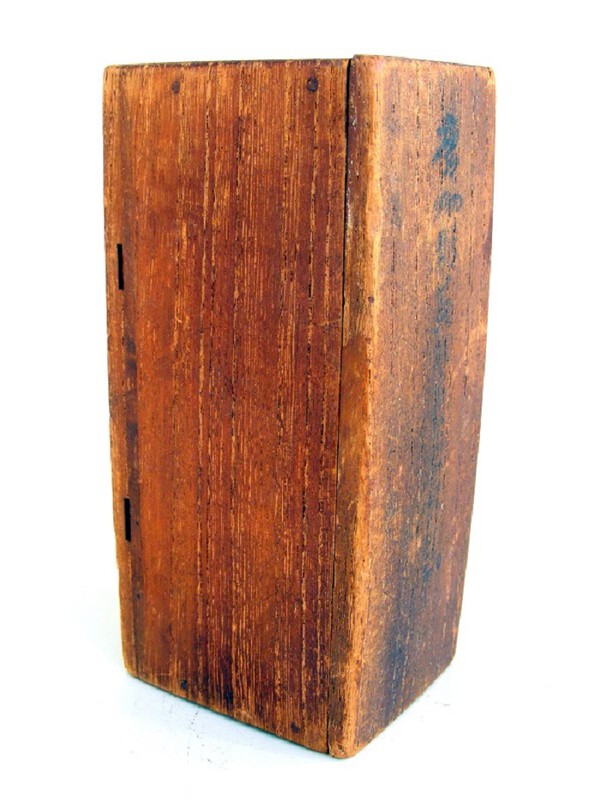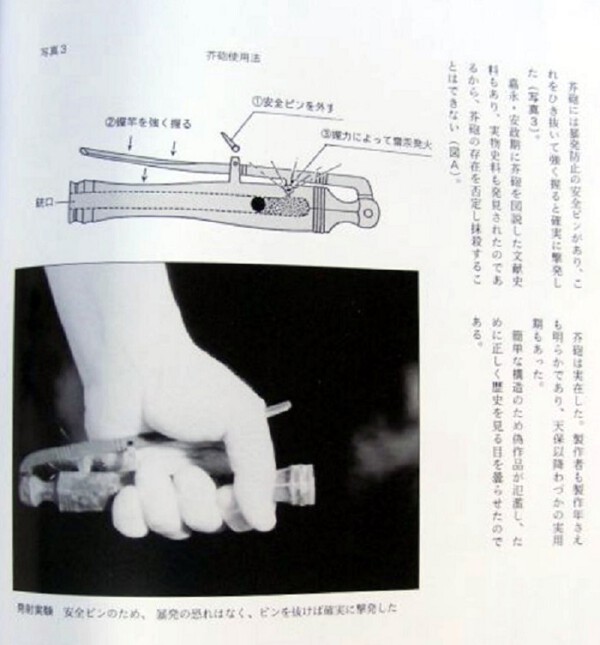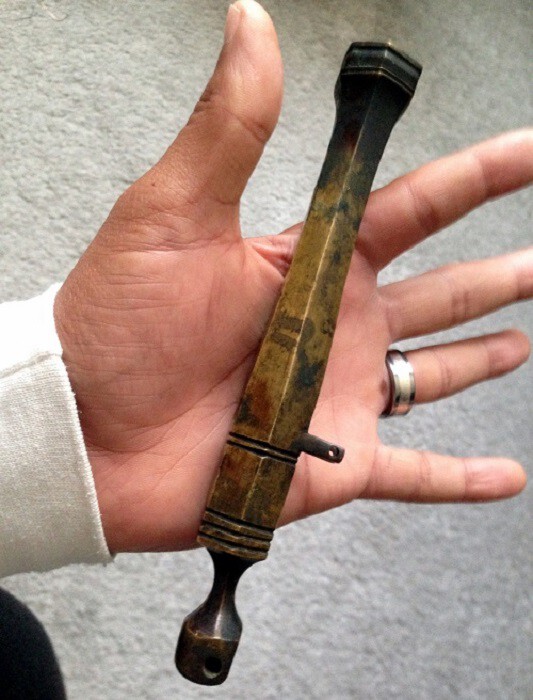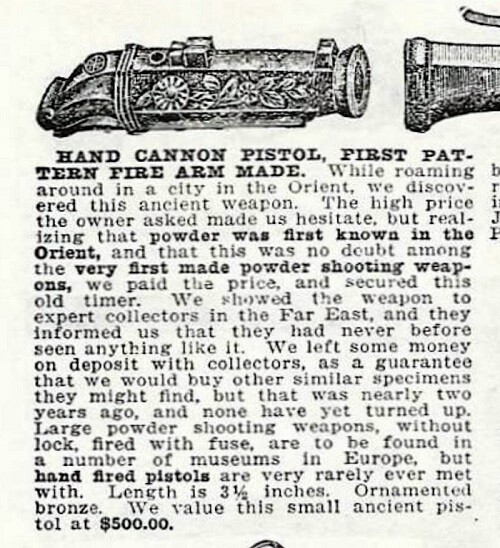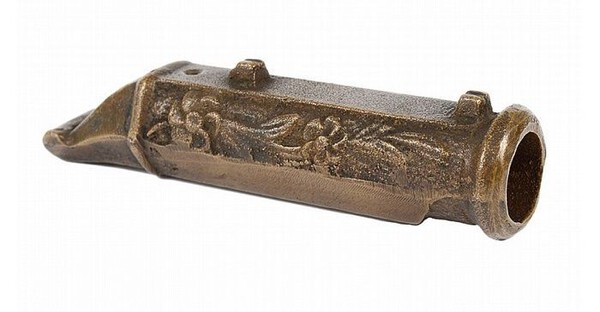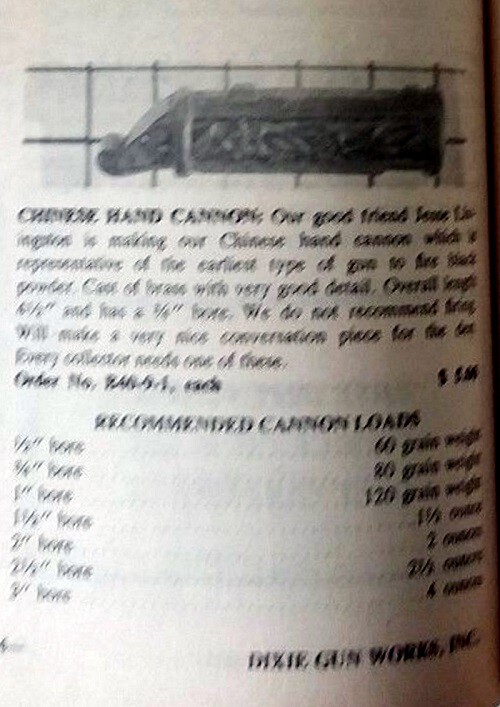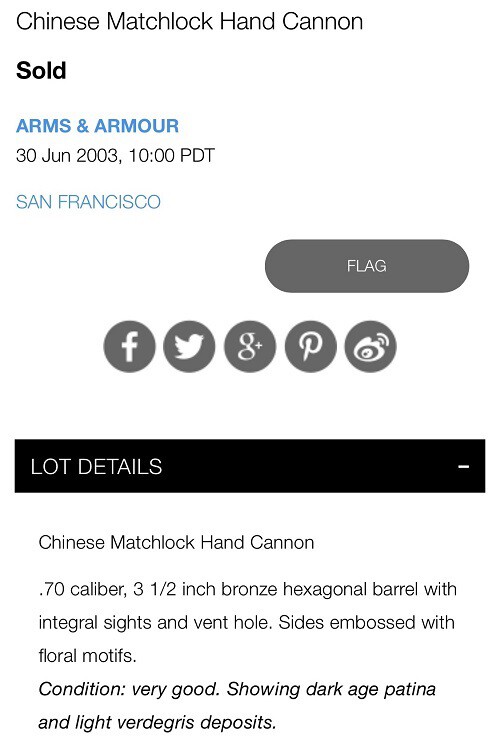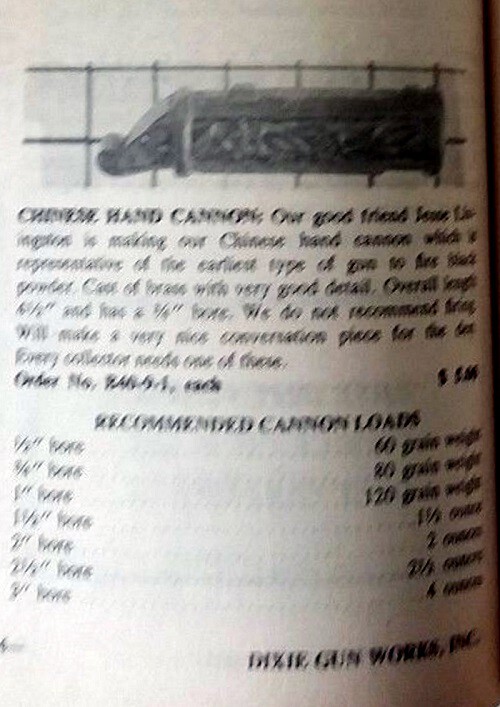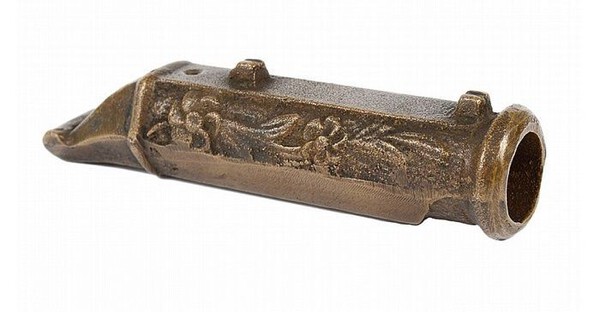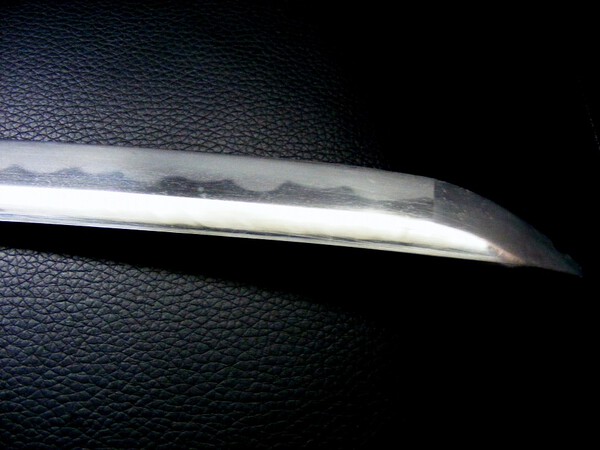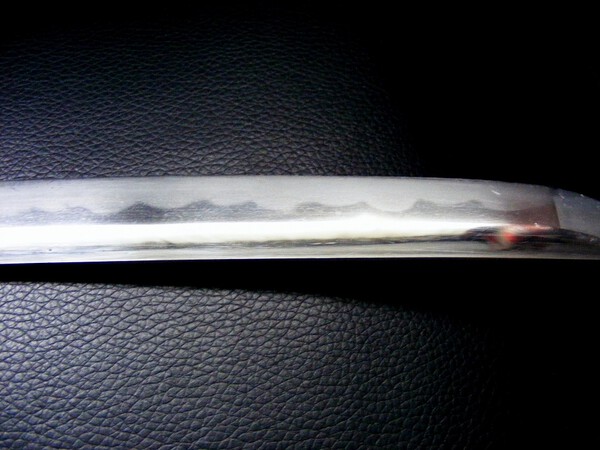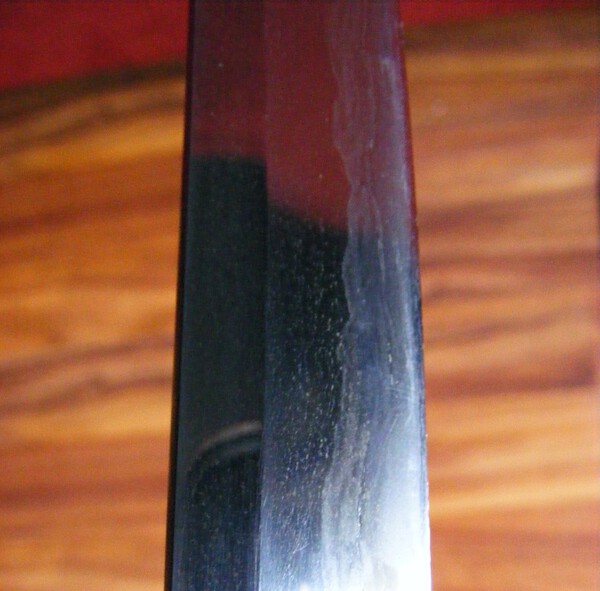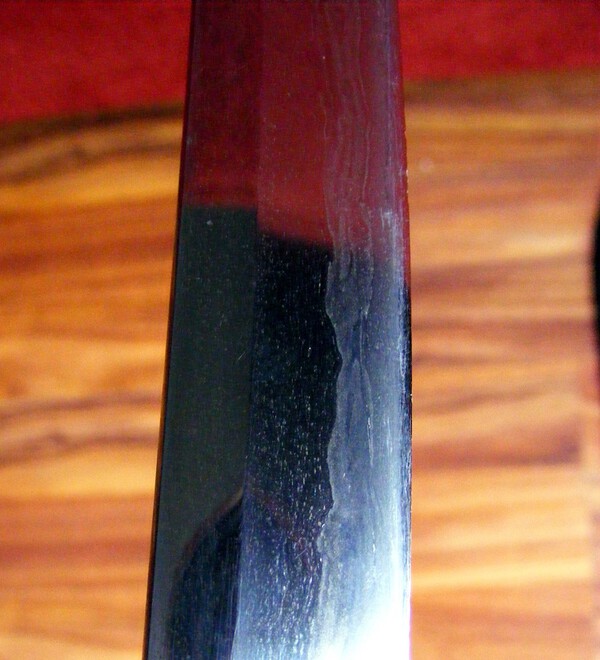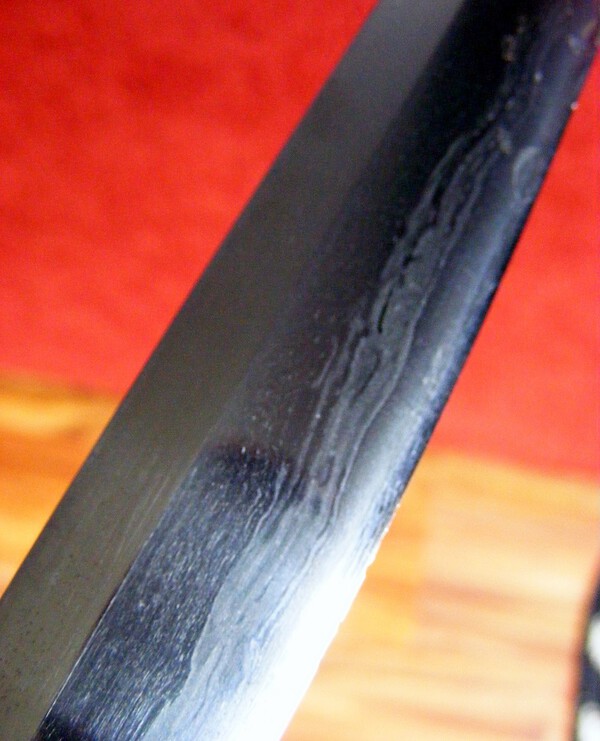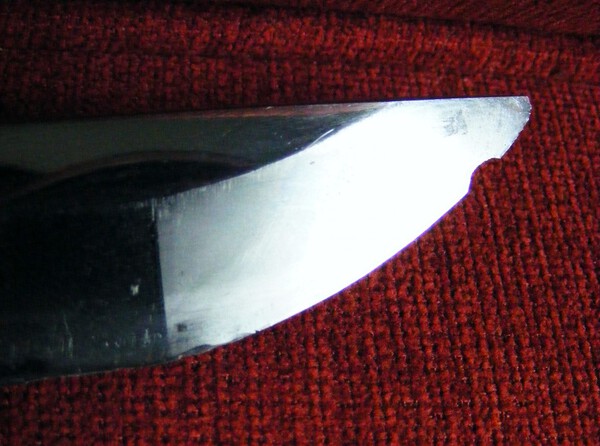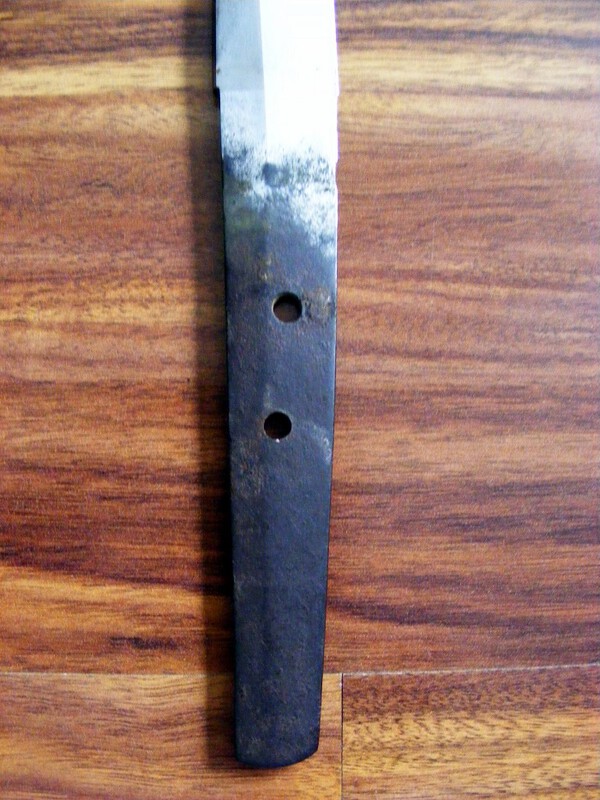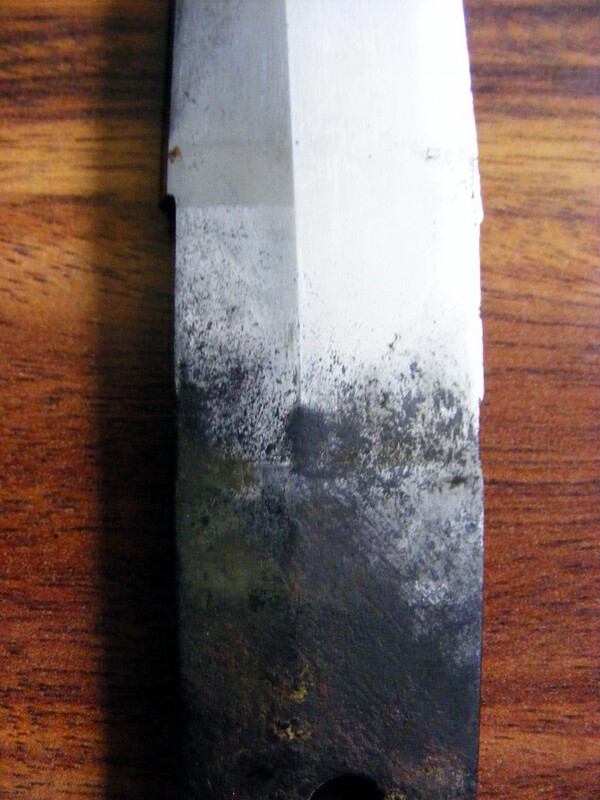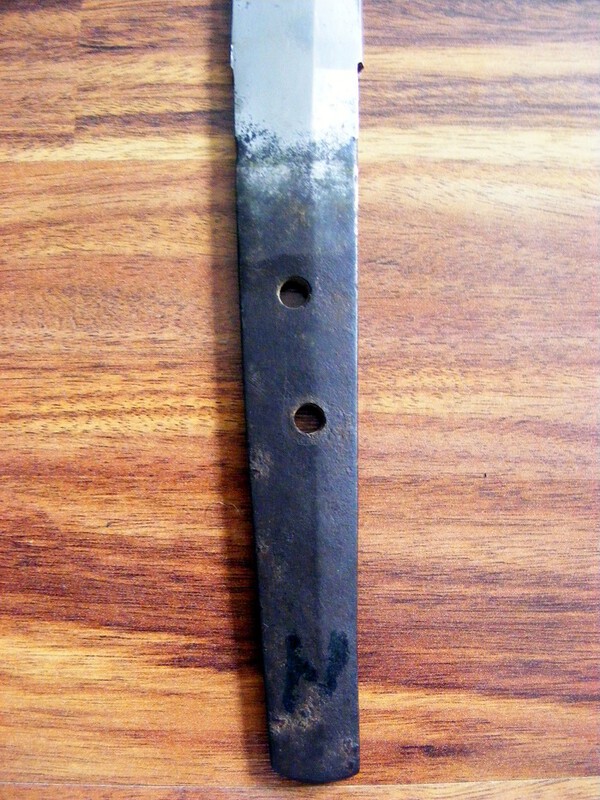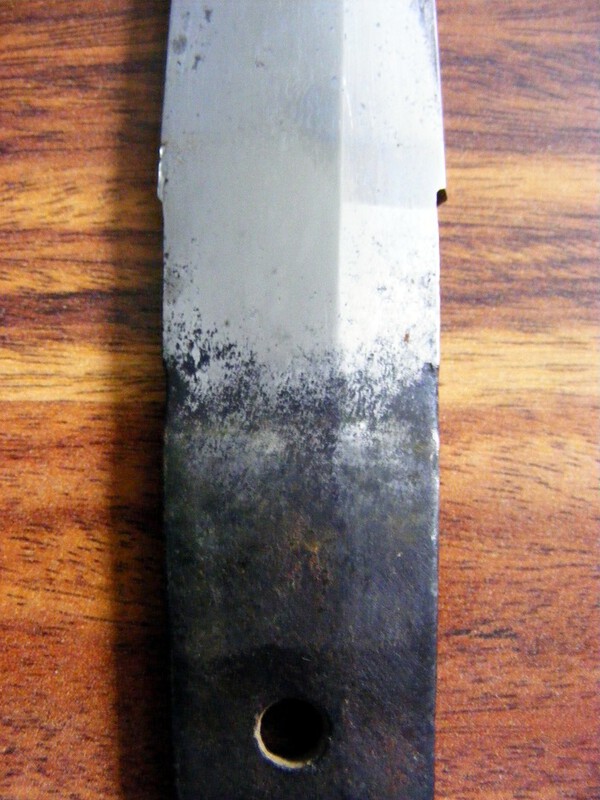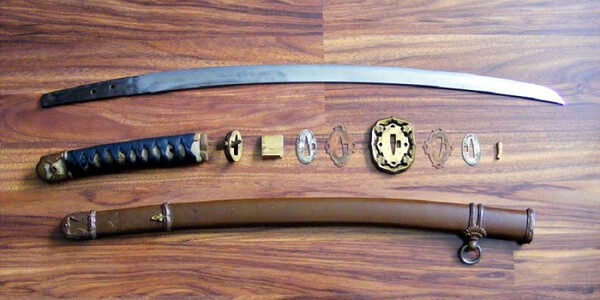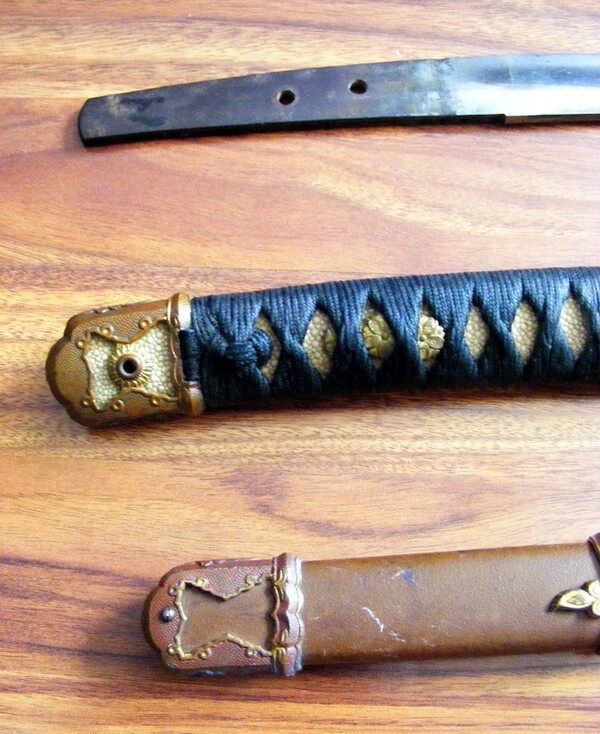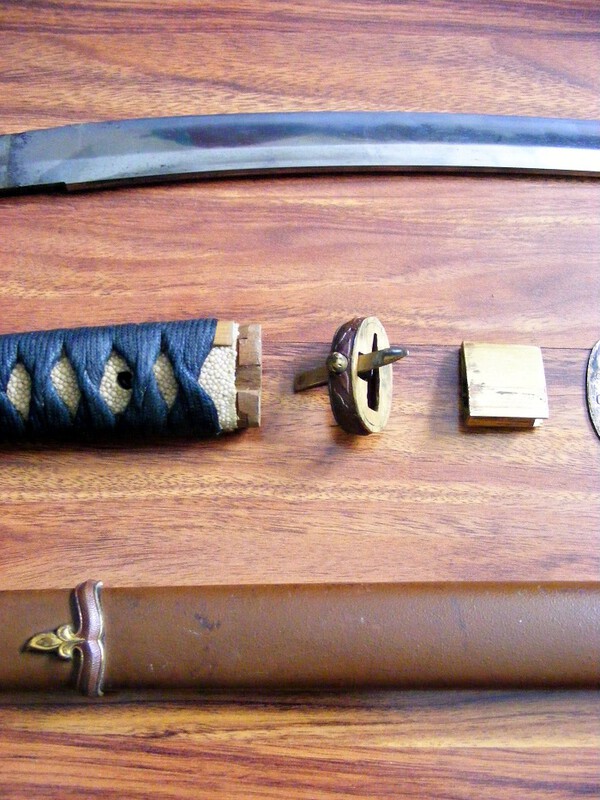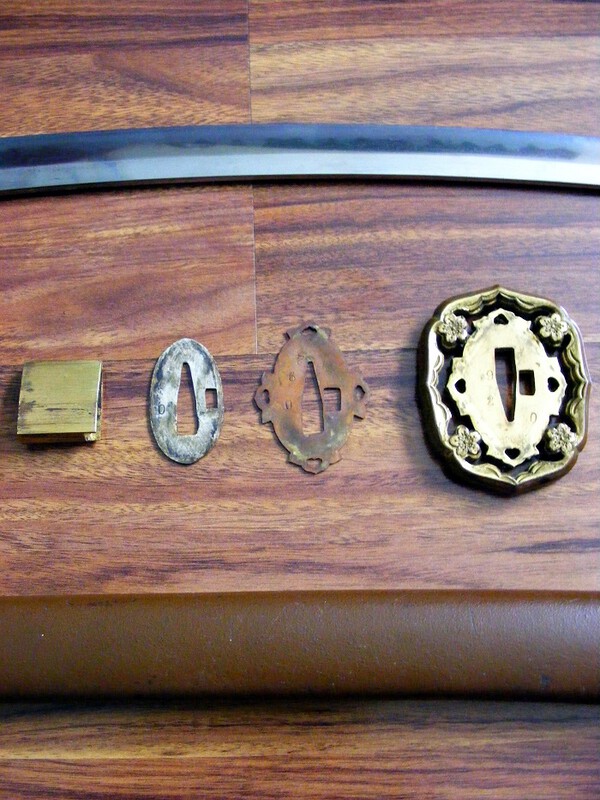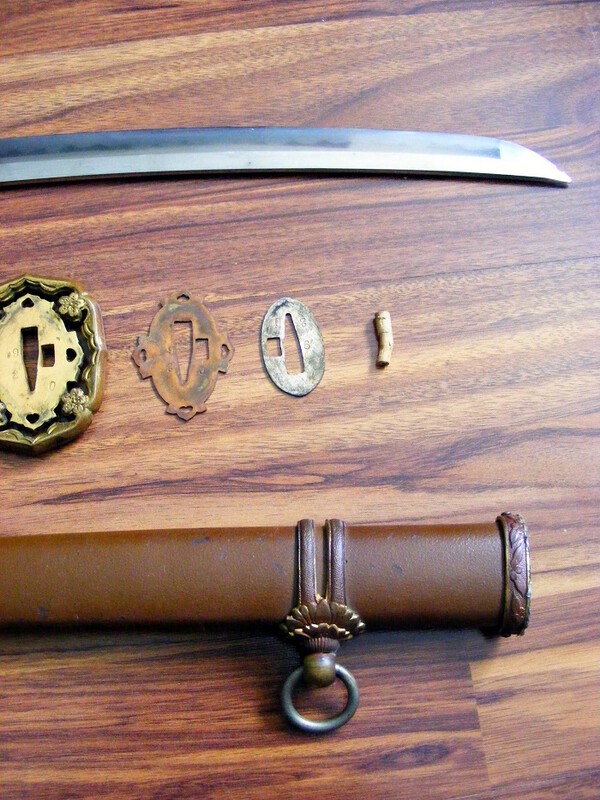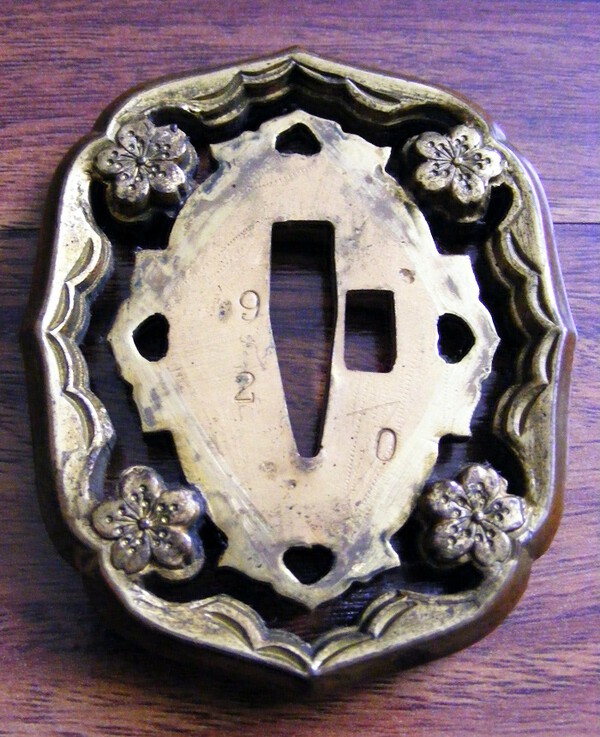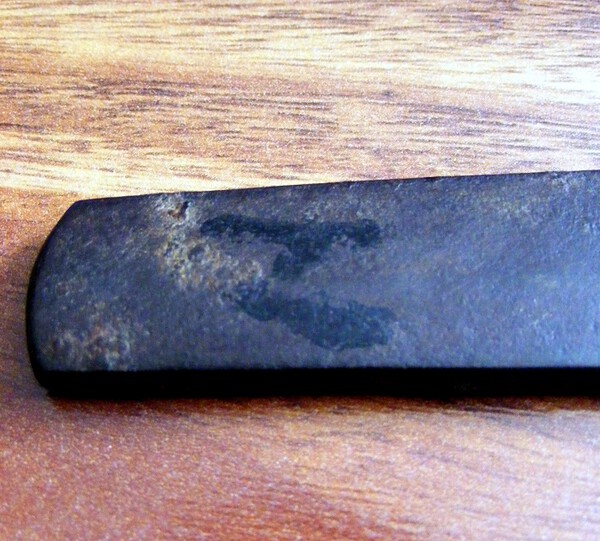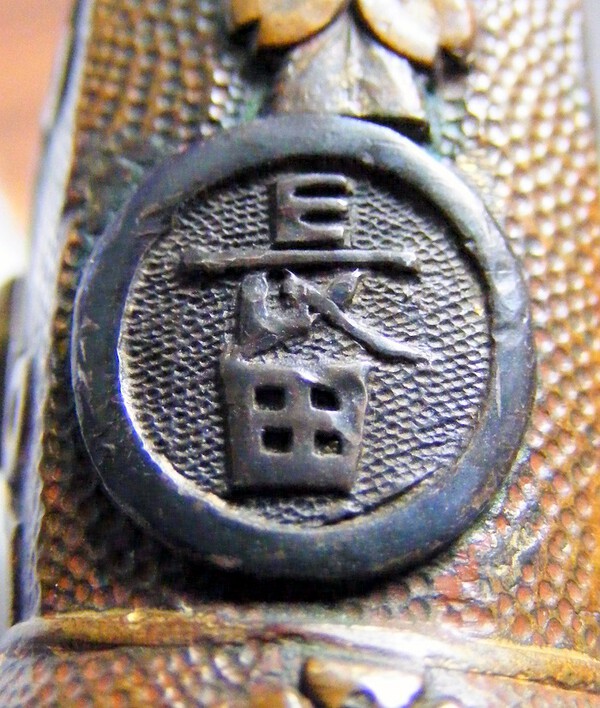
JPGH
Members-
Posts
60 -
Joined
-
Last visited
Content Type
Profiles
Forums
Events
Store
Downloads
Gallery
Everything posted by JPGH
-
Hello everyone, Can someone please help with translating part of the inscription found on the lid of this old wooden box? Thanks in advance for your help. P.S. the box houses an old netsuke
-
Hello everyone, Over the past couple of weeks I've been striving to research the history of a small 3-1/2 inch bronze "hand-cannon" found illustrated at the upper left-hand corner on page 61 of Francis Bannerman 1907 Military Goods catalog, but to no avail. Below is the illustration: In my research, all I've been able to find on the above are 20th century reproductions made in brass stating that it's a Chinese hand-cannon. Sadly, some auction houses and internet auctions are offering/selling these crude 20th century reproductions as "original period" hand-cannon. Below are a couple of images of the reproduction and a 1981 Dixie Gun Works catalog entry showing they are reproducing these "Chinese hand-cannon" and selling them at $5 USD each: My question(s) on another thread (http://www.militaria.co.za/nmb/topic/21648-pistols-avaiable-in-new-york-in-1907/) was/is.... can someone here please shed some light on this weapon? and member Piers D wrote: "Jo, it is a Japanese Kayaku-dameshi powder tester. 火薬試し Ignore the original description. Most of it is wrong. They are rare but not über rare. I have owned three of them. When a new batch of black powder was made up the gunsmith could test fire in the hand or nailed or strapped to a bench, judging the flash, the smoke and the report whether it looked good. By the same token as you say there are crude modern castings going around of inferior quality, so be aware! I have taken two or three of them in hand. A good one today should not cost more than $500 US in modern dollars unless it is of particularly fine or unusual workmanship. (No idea what a modern brass copy would make, but I would not want to pay even $50 for one.)" My question(s) should have been.... can someone here please help shed some light on the actual weapon illustrated in the 1907 Bannerman's catalog? Is it Chinese or Japanese in origin? Why can't I locate other examples of this exact "hand-cannon" anywhere other than 20th century reproductions? Why are all of these internet auction and even some reputable auction houses such as Bonhams offering/selling these repros as originals: Can someone please help? Thanks in advance for your time and replies.
-
Pistols Avaiable In New York . . . In 1907
JPGH replied to Peter Bleed's topic in Tanegashima / Teppo / Hinawajū
Thanks so much for your reply and info, most interesting! I've seen these 'Kayaku-dameshi' while conducting my research into the 1907 catalog's version, but have still not found any examples of this 1907 cataloged piece other than these reproductions... ...being offered and/or sold as original period pieces. I was lucky in finding this 1981 catalog image (although bleary) of the actual gun company who reproduced these and were selling them at $5 USD each: I've found many different examples of authentic original period 'Kayaku-dameshi' you've mentioned, but no authentic original period examples of the 1907 cataloged piece, why is that? Is the 1907 catalog version in fact Japanese, or is it Chinese? Did the Chinese not make 'Kayaku-dameshi' type pieces to test their black-powder? -
Pistols Avaiable In New York . . . In 1907
JPGH replied to Peter Bleed's topic in Tanegashima / Teppo / Hinawajū
Hi everyone, My apologies for dredging-up this old thread, but I was hoping for a little help? I've been researching the $500 piece at the upper left being offered for sale in this 1907 catalog for a couple of weeks now and haven't found much of anything. From my research: made in China(?), Dynasty made unknown and 20th century crude cast brass reproductions of the piece are being offered and/or sold as originals. Can someone here please shed more light on this weapon? Thanks in advance for your time and replies. Kind regards, Jo -
Thanks so much for your thoughts. Prior to today, we were thinking about keeping it since it's our first ever WWII-era sword find. But after researching the cost for minor restoration and/or professional polishing, that cost is just too great and we decided to place it on the market for folks such as yourself and other collectors of such pieces to appreciate and enjoy. It's really a nice sword and it deserves to be placed within a home where in can be loved, appreciated, preserved, studied and passed down to future generations who can and will do the same. Thanks again everyone for sharing your time, knowledge and kind truthful thoughts......... most, most appreciated! Thank you all!
-
Wow! I see this thread has went to a level far beyond what I was expecting. Some great info being dropped and I learn something new each time I log-in. I tired taking the photos as you suggested, but to no avail. Cannot capture the hamon. Would the piece clean-up better if I sent it to be professionally polished? Is it worth having this professionally done? (I know, stupid questions). Is it possible for you or another member(s) of the board to please give me a breakdown of exactly what I have? Meaning....... your sword is a late-Koto period, Bizen school, Wakizashi with WWII mount/fittings. I'm quite sure my above breakdown is totally wrong and pathetic. Last, from what you all have seen from the images, what would you "grade" it's condition on a scale of 1 to 10 and it's "collectibility" to collectors such as yourselves? I thank you all in advance for your time and help.
-
I would just like to take the timeout to thank you ALL for your time, thoughts and most helpful replies.....most appreciated! I've tried my best today to capture this Hamon you all mentioned, but to no avail. I cannot for the life of me capture it with my camera as well as I've seen others on the internet. Below are the best two images I have. Do they help at all? Also, do you all think this acidity on the blade may have been caused by fingerprints and/or the wood lined interior of the original WWII scabbard? After the blade sitting for many years, I assume this (acid within the wood) would cause these effects on the blade as do the wood backings of antique framed prints & drawings receive foxing. Again, thank you all!
-
I promise, I've done nothing! I just picked this piece up yesterday and was even afraid to try and take it apart until watching the video. The only thing I've done was wipe my fingerprints off with an old t-shirt after handling striving to answer image request from you all. I wouldn't dare try cleaning something as old as this on my own. No way! I'm even afraid to try an put the piece back together since taking it apart.
-
Thank you so much for helping. I'll do some research and see if I can find anything given the information you so kindly provided.
-
Thanks for adding the sword care link, most appreciated. I'm located in South Jersey, New Jersey.......just outside of Philadelphia.
-
Thank you and I've added some images. Hopefully, they'll help?
-
Thank you! Yes, he tried to get one over on me, sad! My apologies. I'm finding myself having to Google the many number of sword terms you all are using to affectively reply. Also, it's quite difficult for me to capture good, clear and up-close images of the blade request. Below is the best I can do for now. Sadly, as you can see, there's a small chip. I hope these images help?
-
Thank you!
-
OMG! Are you kidding me? That is awesome! Thank you so much! A couple steps behind me at the sale, there was an experienced older buyer who I've seen and/or know of for many years that buys almost everything military (WWII or older) related. He asked to see the sword after I purchased it, looked it over and said: "it's a nice wall hanger....tourist piece made in the Philippines, 1980s....nicely done,....worth maybe $40 - $50....I'll give you that if you want to re-sell?". Feeling a bit discouraged, I kindly thanked him and moved-on about the sale looking for other items to purchase with sword in-hand. I had a feeling this piece might be period (WWII) but had not a clue it (blade) could be that old! Thank you so much for time and help. Most, most appreciated! Do you or anyone else here have any thoughts on what that black painted character represents or can help with ID'ing the Mon?
-
Thank you! I'll make sure to write the above info down so I won't forget. Again, thank you!
-
My apologies, I measured incorrectly.... the size is approx: 20-5/8 inches.
-
Thank you and thanks for the breakdown and link. The size using the link you posted is approx: 19-1/2 inches.
-
-
Hi everyone, I'd like to start-off by saying I'm not a sword collector whatsoever. I ran across and purchased what appears to be my first ever authentic WWII period sword. It was purchased at a local sale here in my area and the folks selling it had no info/history other than it was part of a "house clean-out" were an elderly gentleman had passed away. I'm such a newbie,......I had to watch a Youtube video on how to take the sword part. Hopefully, I'll be able to put it back together correctly. After I took the sword apart, what I found was almost every piece has matching numbers and the blade is mark with what appears to be a black painted Japanese character ??? The hilt has a Japanese silver family Mon that I was able to ID. My question(s)..... is the sword of the WWII era? If so, can you all please share your thoughts on the who, what, when and where? Last, is it possible for someone to please help me ID the Mon? The size of the blade only (because I haven't put the sword back together as of yet) is approx: 26-1/4 inches. Thank you all so much for your time and I look forward to your replies. Regards, Jo
-
Replied.
-
Thank you! The one kashira at right I was able to ID as Daruma, 18th/19th C. Do all these items date from this era? Also, can someone please help translate the signature on the obidome and marks on the reverse of that menuki?
-
Thank you! I'll do a search using these names and see what I can find. Here are some images of the backs:
-
I'm not sure, but I can take some images? Here's the reverse of one that appears to be signed and/or marked with different markings:
-
Thank you! Searching obidome on Google, I found a number of different gold and silver antique "bracelets" that these may have been attached to at some point in their life. Maybe these were fashioned as a bracelet (that's why they were mixed in with the old jewelry) and someone scraped whatever silver or gold they were once attached to?

